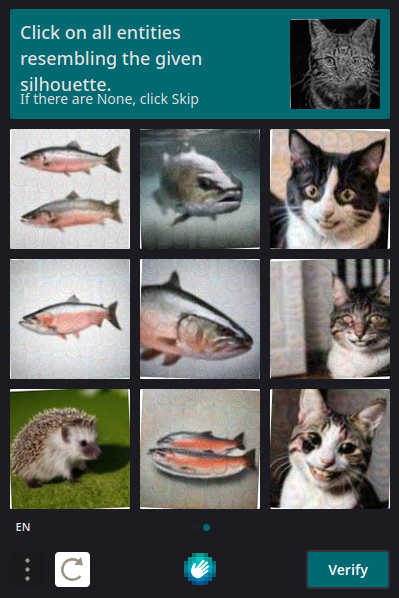rangifer’s diary: pt. cxvi
ℹ️ This diary entry was delayed. Please see the next entry for more information. Thank you. 🧡
u want me to send u audio[?]
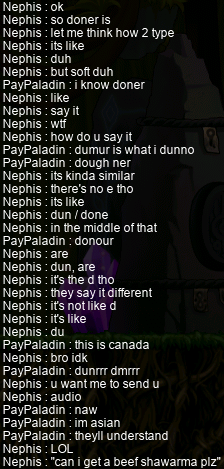
Transcription of the above image
Nephis: ok
so doner is
let me think how 2 type
its like
duh
but soft duh
PayPaladin: i know doner
Nephis: like
say it
wtf
how do u say it
PayPaladin: dumur [sīc] is what i dunno
dough ner
Nephis: its kinda similar
there’s no e tho
its like
dun / done
in the middle of that
PayPaladin: donour
Nephis: are
dun, are
it’s the d tho
they say it different
it’s not like d
it’s like
du
PayPaladin: this is canada
Nephis: bro idk
PayPaladin: dunrrr dmrrr
Nephis: u want me to send u
audio
PayPaladin: naw
im asian
theyll understand
Nephis: LOL
“can i get a beef shawarma plz”
This little exchange exemplifies preliterate phonology/phonetics. Most of us are preliterate in this respect, not least because we generally learn languages — be they L1s or L2s — informally through exposure, rather than by e.g. taking notes in a classroom.
However, perspicuous writers have been writing on these subjects in the context of various languages for some centuries now. This is one big way that we know how people used to speak, even though they lived before — & often, long before — the invention of durable audio recording. Linguists who reconstruct old phonological systems do so with many scientific methods under their belts, so with the assistance of old writers who had insight into their own languages, reconstructed pronunciations can be a lot more robust than you might think!
This speaks to the immense power of, you know, actually thinking about something in depth. Nowadays, we have (relatively speaking) powerful readymade tools like the International Phonetic Alphabet (IPA), & even massive troves of phonological data like that of e.g. PHOIBLE. And when I say “nowadays”, I mean that the IPA has been around since the late 19th century…
With the glorious power of Unicode, all the kinds of personal devices that you might connect to the internet (e.g. a phone, a personal computer, etc.) natively support the IPA (along with most of the other writing systems in existence)[1]. The IPA has its flaws (perhaps due in part to its long legacy), but it hasn’t been replaced yet, & it’s a lot better than, you know, nothing. Old versions of MapleStory lack the glorious power of Unicode (due once again to its long legacy), but we can still use X-SAMPA for that purpose. X-SAMPA hurts my eyes too, but you know, come back to me when you’ve a better idea. And no, saying “its like duh but soft duh” is not a better idea.
ℹ️ Not interested in how döner might be “natively” pronounced, or how it might be pronounced in English? Feel free to skip ahead to the “What’s actually going on here?” section below.
Whence döner?
⚠️ The following contains some phonetic transcriptions that have playable audio (try clicking on the orange ones). See the “A brief note on the eSpeak feature of this diary” section of pt. cxii of this diary for important caveats!
In English, döner (also spelt ⟨doner⟩) is used exclusively as an ellipsis of döner kebab. This phrase entered English via Arabic, & because Arabic languages generally lack the /p/–/b/ distinction — a voicing distinction, where the former is unvoiced, & the latter voiced — present in both Turkish & English, Turkish kebap ultimately became English kebab.
So the “native” origin is — you guessed it — Turkish döner kebap. Döner is a conjugated form of the verb dönmek, & so it means something like “spinning, turning, rotating” — because it’s cooked on a rotisserie. As it turns out, the kebap part was actually borrowed into Turkish from Arabic كَبَاب ⟨kabāb⟩ /kaˈbaːb/, from a root meaning something like *“[to] roll over”. This implies that döner kebap is arguably etymologically pleonastic, & also that the “original original” pronunciation “actually” ended in /-b/. But whatever.
The döner part is definitely Turkish, though, & it’s pronounced like so: /dœ̝ˈnɛ̝ɾ/ [d̪œ̝̠ᵝˈn̪æɾ̞̊].
Neither of the speakers in this conversation speak Turkish, so we really just want to approximate the Turkish pronunciation — that’s the best that we can do. But… we’ll get to that later. First, let’s pick apart the narrow transcription (the one in square brackets above) — after all, we want to sound ✨authentic✨, right?
- d̪
- The funny-looking staple thingy under the ⟨d⟩ means that it’s dental. That means that your tongue is pushed against your upper teeth, like at the beginning of English then /ðɛn/. However, in many English accents, that sound is a real fricative, rather than the stop that we’re going for here. This is a real “d” sound, not an “ð” sound! If you’re from Ireland, however, the beginning of then is already [d̪] for you, so you’re all set. 🙂 If you’re not from Ireland, then try a “d” sound but with your tongue further forward.
- œ̝̠ᵝ
-
I apologise for this one, I really do. The English word comma ends with /-ə/. This vowel is a little bit like that, except rounded. Indeed, the little superscript ⟨β⟩ means that it’s compressed (the lips are drawn together but do not protrude). But it’s also with the tongue a bit further forward in the mouth, so it’s also a little like a compressed version of the /ɛ/ in English dress.
If you learnt to speak English in certain places like South Wales, New Zealand, South Africa, & maybe some other places, then this vowel might be pretty close to your vowel in the word nurse. If you speak French, then try something around the /ø〜œ/ in ceux〜sœur.
- ˈ
- The stress is on the second (& final) syllable, not the first.
- n̪
- Hey, it’s the staple thing again! Similar comments to those on [d̪] apply. English speakers tend to pronounce /n/ this way when it comes immediately before /ð/ or /θ/, as in e.g. unthinkable.
- æ
- Turkish — that is, the modern standard language associated with İstanbul — has long since merged /e, æ/ into what I’ve written as /ɛ̝/. This vowel is lowered (literally meaning your tongue is lower) to [æ] in this case (because of the coda of its syllable), which is kinda like the vowel in American English cat. However, this same vowel is more like [a], or something else, in other dialects of English. You shouldn’t really think of it as an “a” sound; it’s more like an “e” sound… or rather, something in between (hence the symbol ⟨æ⟩!).
- ɾ̞̊
- Turkish has an “r” sound: /ɾ/, like in Spanish pero, or the “d” sound in English ladder in accents that have alveolar flapping. Because it’s at the end of the word, it gets devoiced & a bit lowered to this sound. Because the whole point of this “flap” consonant is that your tongue flaps the roof of your mouth, lowering your tongue causes it to not quite “flap”, resulting in probably some frication. Thus, this can sound a little like English /ʃ/ as in ash. But it’s better to think of as a not-so-voiced /ɾ/. 🙂
[Döners Englishly]
That’s a lot to take in, but armed with this knowledge — & knowledge of the underlying phonology — we can understand how an English speaker might say döner.
The following list is in basically increasing order of Anglicisation, & simultaneously decreasing order of Turkishness.
Native Turkish speaker
As explained above. Not really practical to pull off consistently unless you speak Turkish.
Trying hard at Turkish phonetics
[d̪œ̝ːˈnɛɾ]
The [d̪] here may or may not really be dental, but maybe the English speaker is trying really hard, or they’re Irish or something. The first vowel might be produced by trying the dress vowel but forcing your lips to be compressed (as in the first case), or you might do it the latter way if your nurse vowel is already like that (although the fact that the nurse vowel is in an unstressed syllable is otherwise phonologically invalid). And here we assume that you’re able to at least produce a bog-standard [ɾ].
The result is maybe more practical depending on where the English speaker is from, & might sound pretty good — or at least like a commendable effort — to a native Turkish speaker.
Shoehorning Turkish phonology into English phonology
We’re now giving up on trying to emulate a “Turkish accent” (if you will), & instead resigning ourselves to exclusively using standard English phonemes. The main problem here is, of course, the vowels.
I’m not gonna lie to you — the Turkish vowel system is different from English’s vowel systems in almost every conceivable way. So the choices here are somewhat arbitrary. I decided that it was most sensible to start with /ʊ/, as in the final vowel of girlhood. This captures the roundedness of the Turkish vowel reasonably well, whilst pushing the vowel likely(?) as far forward as possible. Then I end with /-ɛə̯(ɹ)/, which is the same as the end of the word square.
There’s also the slight problem of the “r” sound at the end. If you speak a nonrhotic variety of English, then words never end in */-ɹ/ for you, with the slight exception of linking or intrusive “r”s. But that’s just English phonology. What can you do. 🤷🏽♀️
Fully nativised pronunciation
/ˈdoʊ̯.nə(ɹ)/
According to English Wiktionary, these are the English pronunciations of döner associated with the UK & with Northern America, respectively. For other parts of the world, I’m less sure; I’d expect that Australian pronunciation would basically align with the UK pronunciation, but that same Wiktionary entry has example audio of an Australian speaker using the American pronunciation. So iunno.
In any case, the most notable feature by a longshot is the stress placement: the first syllable is stressed, instead of the second. This is extremely significant in English not just because English has phonemic stress, but also because English vowel quality is strongly connected to stress placement.
The UK pronunciation is homophonous with donner “one who dons”, whereas the American one is homophonous with donor “one who donates”.
Both fully-Anglicised pronunciations are based on the spelling (except that the diaeresis is ignored), which is why the ⟨-er⟩ is consistently interpreted like the end of letter.
What’s actually going on here?
Let’s step through the parts of this conversation where pronunciation is explained — or at least, attempted to be explained. Keep in mind that both speakers are Canadian.
Nephis: its like
duh
but soft duh
English duh may have the strut vowel or the nurse vowel depending on where you’re from, but this speaker is Canadian, so it’s just the strut vowel for them: /dʌ/ (closer to [dɜ]).
The “softness” is less clear to me, but it could be either of two things:
- Nephis identifies the /d/ as [d̪], hears it as similar to /ð/, & so thinks of it as a “soft ‘d’”.
- Nephis notices that the vowel is not really quite [ɜ], & thinks of it as a softer version (perhaps due to the lip compression).
PayPaladin: dough ner
Probably getting at the standard Northern American pronunciation from above: /ˈdoʊ̯.nə(ɹ)/. However, in Canadian English, /ə, ʌ, ɜ/ are all neutralised when immediately followed by /ɹ/, so the use of ner leaves stress placement underdetermined.
Nephis: there’s no e tho
its like
dun / done
in the middle of that
I’m at a complete loss here. I simply cannot imagine a Northern American English speaker making a pronunciation distinction between dun & done.
Nephis: dun, are
it’s the d tho
they say it different
it’s not like d
it’s like
du
Okay, so we really are pointing out that the /d/ is dental [d̪].
I think…? The fact that Nephis is indicating the difference by adding a ⟨-u⟩ really confuses me, & I think that they might be hearing the roundedness of the first vowel as affecting the “d”, like [d̪ᵝ]? Not 100% sure on this one.
My advice
Noöne is expecting a random Canadian (Asian or otherwise) to be fluent in Turkish. And that’s okay.
If you want to make a more earnest attempt at pronouncing döner, then try placing the stress on the final syllable — & tack a [ɾ] on the end for good measure. But if you’re ordering at a restaurant in Canada, then you might get a double-take from a restaurant employee who’s used to hearing it called a “donor” all day.
But if you’re still quite sure that you want to get it right, then you’ll need to learn how tongues & lips move, & how those movements are written. Anything else is just muddying the waters even further.
Footnotes for “u want me to send u audio[?]”
- [↑] Of course, there’s also the problem of font support, if you need to visually render the text (as opposed to reading it directly, for example). But even then, there are plenty of fonts to cover Unicode these days — including some that cover huge swathes of it, like e.g. Noto.
Pierre qui roule n’amasse pas « moose »
Mmmmkay, it’s time for the real shit: cardhunting with acles alces! Remember her? The one with the dagger. You remember.
I’m on my way from the T9 ring to the T10 ring, still following the same old path, which brings me to the Ellin Forest:
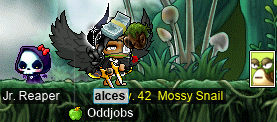
I already did the questline long ago, of course, but I don’t think that I naturally finished any of the card sets along the way. It’s time to fix that.
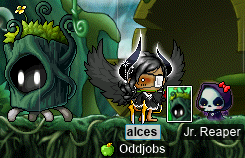
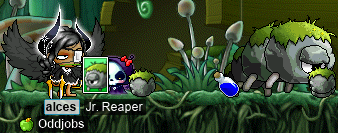


That wasn’t too bad. I don’t worry about these sets; partly because they generally aren’t difficult, & partly because I get to spend time here in the ✨lush✨ forest anyway. 😌
Le retour
My next destination, however, is quite the opposite of “lush”. In my return to Vicky Island to get its more difficult sets, I’ll be starting at Perion’s Excavation Site.
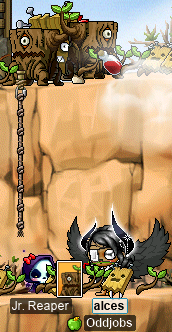
The perpetually-unfinished excavation of this archæological site is perhaps a bit annoying, but understandable. The ruins of the long-lost Sharen Kingdom are quite the cultural–archæological treasure indeed! I just hope that they’re taking due care of the things that they dig up & bump into along the way…

Mkay, I think that’s enough for now. Are you yawning? Because now I’m yawning.
Que j’aille me pioncer
💤
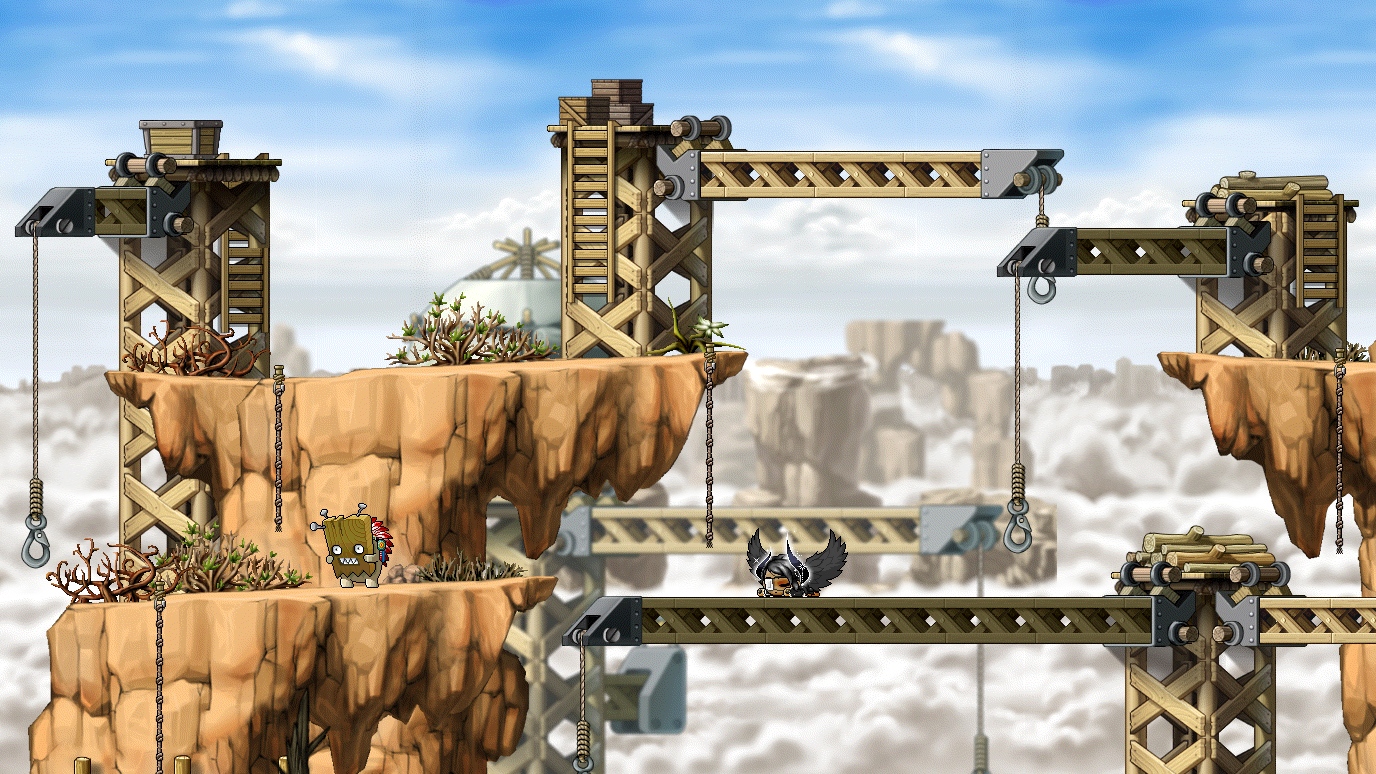
💤
Feeling stabby, might delete later
Alright, alright… I’ll keep playing, I guess. What if I… I dunno, levelled up twice? Like rn? Would that be cool?
Kay. Let’s do it.
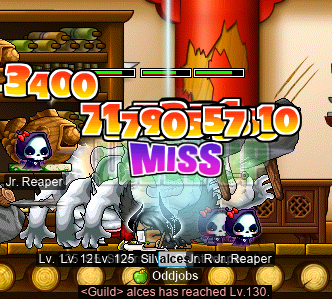
Wow! That sadgrinding on GM buffs at 7 F really paid off, huh?
Let’s take the “sad” out of “sadgrinding” by duoing with F/P archgish LawdHeComin (AppleBasket, OrangeFungus, Snel, Mushers) instead, shall we?:
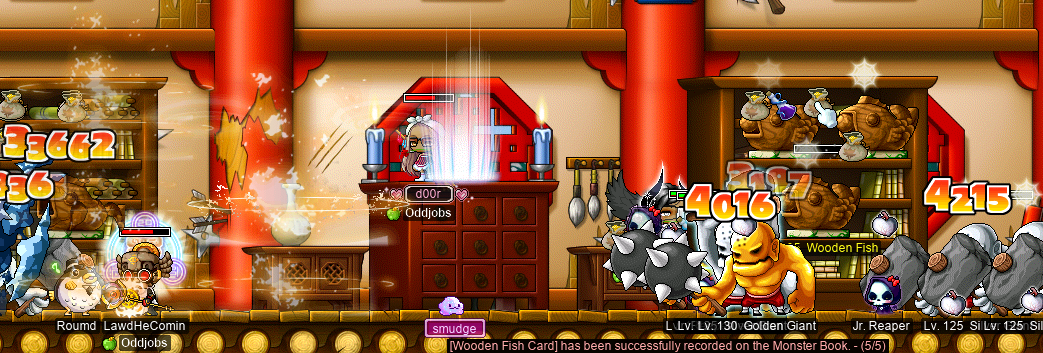
Well, it’s not the most impressive card set, but finishing the Wooden Fish set definitely helps. 🙂
And just one or two floors downstairs, I did some duoing alongside DEXadin SwordFurbs (SwordFurb, Furbs, Yoshis)! And hit mfing level 131~!:
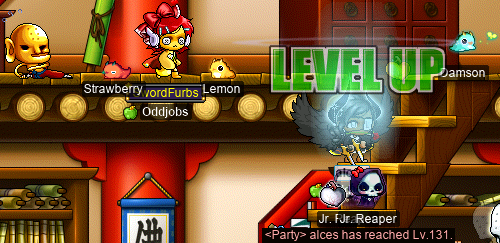
Whoa! These level numbers are getting suspiciously close to the 1️⃣3️⃣5️⃣ milestone. Although I do enjoy playing alces quite a bit, & do grind EXP on her from time to time, I can’t say that I’m actually shooting for any particular level milestone — 135 or otherwise. The only reason why 135 has any significance is that it’s five fewer than the level of so many bosses: Scarlion/Targa, Krexel, & of course Zaqqūm are all level 140. But do I look like I’m about to stab Krecks in its ginormous arboreal eyeball? Or the Zaqqūm statue in its crumbly stone buttocks??
I don’t think so. And that’s okay. Although I do very much enjoy Zaqqūm in particular (as well as some of the other bosses that MapleLegends has), I have other characters that can stand to pick a fight with that helltree. There’s more to story to Maple than BossStory.
And, well, there are some other bosses that I can still do. Like this pair of Capitan Lataniels that I did alongside DEX WK eject (inject, inhale)!:
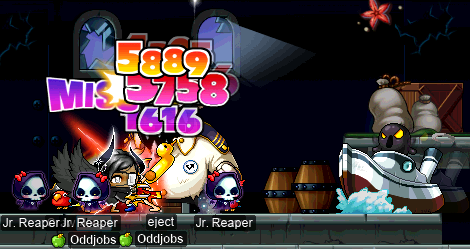
🖤
Hullow, it me. ruza
It me, ruza rusa. No, not the fake “““Rusa”””, I mean the real rusa™[1]!
I’ve been doing a little more Peebing (which is the real, professional term that Pink Bean experts actually use), & I somehow got the friccing chair?

If I thought that I was gonna get the chair, honestly, I would have passed off my looting privileges to someone else. But for reasons known only to some Java™ spaghetti code running on a server in Québec, that particular PB run dropped two (2) chairs. Is that even possible‽ That’s what everyone who didn’t witness it first-hand asked.
The second chair was just sitting there on the ground, waiting for only that short time before it could expire into the digital void — as untradeable items are wont to do. Flustered, I didn’t wanna figure out a fair way to redistribute the chair to someone else on the spot, so I just… looted it. 😖
It is pretty neat though, so I’ll be sure to take care of it. 🙂
And I still do non-PB things… sometimes! Like fricking Burger Moth, with my Maple wife Harlez (Gock, VigiI)!:
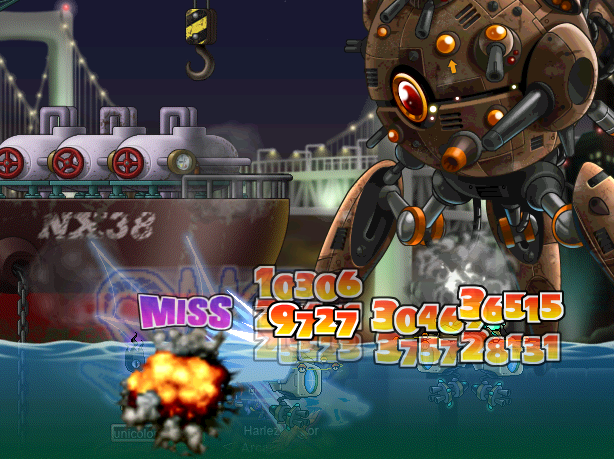
O, Burger Moth. I hope to one day see you spread your wings & fly… 🦋
Footnotes for “Hullow, it me. ruza”
-
[↑] If I treated my diary as a kind of “intellectual property” (IP) — putting aside the fundamental incoherence of “owning” something that is totally incorporeal & nonexclusionary — instead of just making jokes (that are not funny) about the very notion, then I really could conceivably trademark rusa™.
The idea of trademarking rusa is now a joke that I actually do think is funny, but I guess I just have a warped sense of humour.
English Wikipedia focuses exclusively on U.S. trademark law, which is strongly favourable to what it calls fanciful marks (see: Abercrombie & Fitch Co. v. Hunting World, Inc. (1976)). A fanciful mark is basically one that doesn’t mean anything before it gets used to identify a product/service, thus making it an obvious candidate for trademark protection. Also registrable are arbitrary marks, which do mean something before-the-fact, but which have no connexion to the product/service, & are thus used with an “arbitrary” meaning — e.g. apple is an ordinary English word, but Apple® Inc. is a computer company that has nothing to do with literal apples.
Rusa doesn’t mean anything in English. It does mean some things in various other languages that are not closely related to English. More importantly, however, it means something translingually as the biological nomenclature for a genus of deer. I suspect that a U.S. court would be unfamiliar with all uses of the word rusa, & thus consider it fanciful. Otherwise, it would certainly be at least arbitrary, as MapleStory characters have nothing in particular to do with literal deers. If rusa were “literally” a deer in some relevant sense, then it might be debatable.
Then again, I would — theoretically — be trademarking my diary, not a character, so really I would want to trademark rangifer’s diary™…
Copyrighting rusa as a fictional character is even more difficult. English Wikipedia once again focuses mostly on U.S. law, where the character must be part of a copyrightable work. That’s easy enough, as my diary fits that definition (luckily, a work doesn’t have to be any good to be copyrightable). Beyond that, I’m not so sure. I think that rusa is sufficiently delineated (that’s the legal jargon) from other fictional characters visually, but that’s probably not good enough. It’s not clear that she’s literarily delineated, so if I want to uphold my U.S. copyrights for one of my MapleStory characters(???), then axisaxis is a better bet… 🤭
Horn’t ale
Where’s the Horntail action, doe?? For that, it’s time for Punchin’ Stuff With tara™! Or… what’s this series called, again?
Anywho, I did a wee bit of HTing on my punchy-punch character tarandus. Thanks to Valtarius, I had a body made of hyper, which meant that I could perform my martial artistry on the legs even whilst my ST was down:
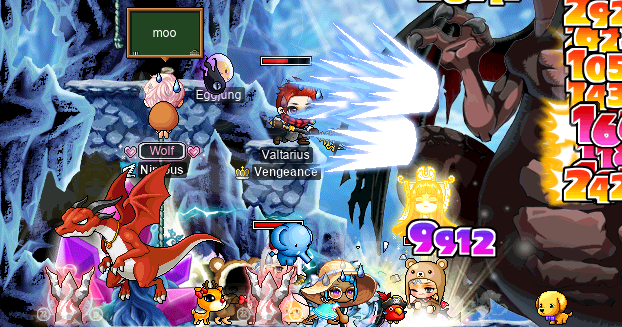
That’s what we like to see. Keep it up. 👍🏽
Oh, & I got another boss chair‽

The Horntail Chair is not nearly as impressive as the PB one, but still pretty 🆒. 😎😎😎
頂上を目指して〈第よん段階〉
Spikes, monkeys, & snakes;
A thousand Maplers tumbling.
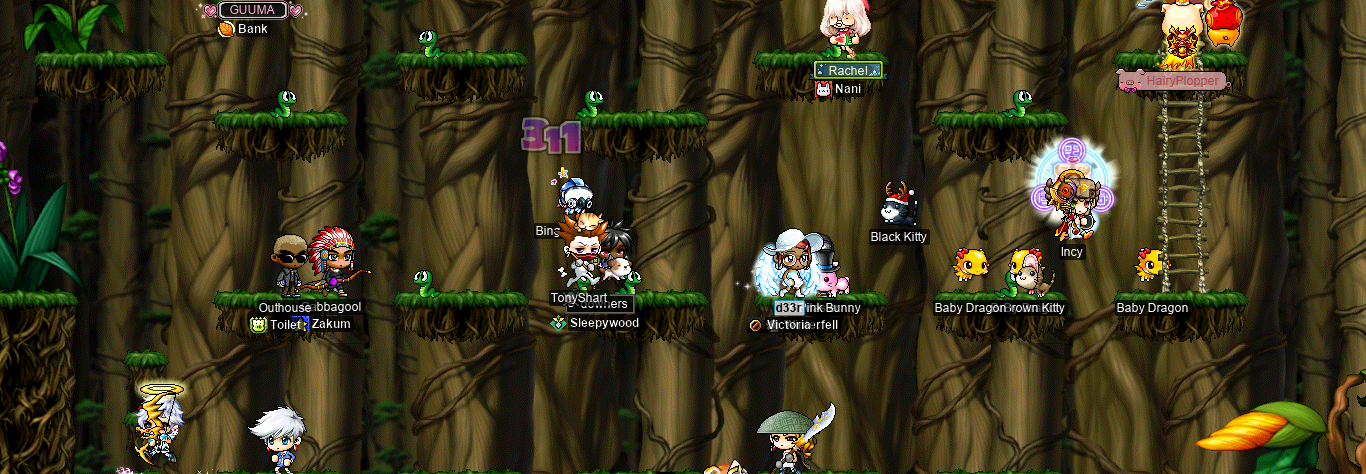
Am I not fit yet?
LawdHeComin & the really big, very huge 163
And finally, I was deeply honoured to attend the singular event of F/P archgish LawdHeComin (AppleBasket, OrangeFungus, Snel, Mushers) absolutely ascending to the highest rank known amongst gish(let)s & magelets: ✨level 1️⃣6️⃣3️⃣✨.

Transcription of the chatlog in the above image
[system message]: ⟨Guild⟩ LawdHeComin has reached Lv.163.
SwordFurbs: om
alces: GRATS!!!!!!!!!!!
SwordFurbs: congrass!
LawdHeComin: thonk
SwordFurbs: he over until challeng ;.;
alces: omg the staff
This makes LawdHeComin the first (as far as anyone knows, I suppose) to attain the ludicrously high level required for the Elemental Staves 5〜8 — especially 5 (the fire one), in this case — as an odd-jobbed character. It certainly took a whole lot of time & effort, but in this context, it’s virtually the equivalent of hitting level 200, except that the reward is arguably even better: access to the almightiest weaponry in all the land. Ordinary staves go “bop, bop” when you smacc with them, but this one goes a little more like “SLAM”!
Incredible. Congrats again!!!
(…cnvpstdf…)
cnvpstdf
![]()
